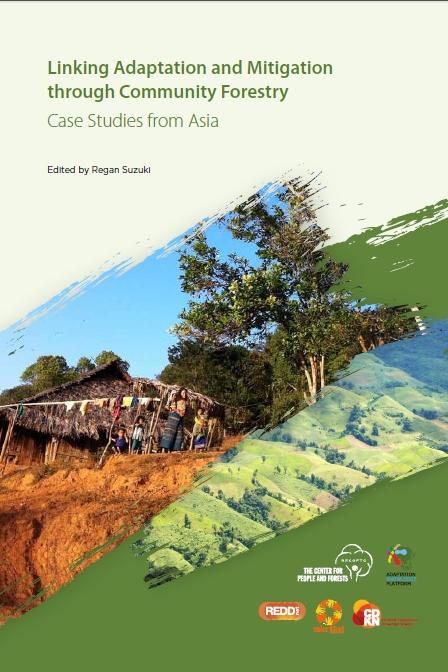
Linking Adaptation and Mitigation through Community
Forestry Case Studies from Asia
Edited by Regan Suzuk
The designation of geographical entities in this book, and the presentation of the material, do not imply the expression of any opinion whatsoever on the part RECOFTC – The Center for People and Forests, REDD-net, CDKN, Regional Climate Change Adaptation Knowledge Platform for Asia (Adaptation Knowledge Platform) and Raks Thai Foundation concerning the legal status of any country, territory, or area, or of its authorities, or concerning the delimitation of its frontiers or boundaries. The views expressed in this publication do not necessarily reflect those of RECOFTC, REDD-net, CDKN, Adaptation Knowledge Platform and Raks Thai Foundation. RECOFTC, REDD-net, CDKN, Adaptation Knowledge Platform and Raks Thai Foundation disclaim any errors or omissions in the translation of this document from the original version in English into other languages.
Overview
Given the role that forests play in mitigation and adaptation to climate change, there are potential synergies between REDD+ and the ability of populations to adapt to the impacts of climate change. To date there has been relatively limited attention to how these synergies can be achieved. However, there is a growing interest in both linking adaptation to mitigation and to adaptation activities generally. In 2010 at COP 16 in Cancun, it was agreed that adaptation needed to be addressed with the same priority as mitigation and required appropriate institutional arrangements to enhance action and support (AWG-LCA, Article 2b).
As many countries in the region develop their national adaptation strategies, explicit incorporation of forests within these plans needs to be ensured. Conversely, mitigation activities such as REDD+ rarely include explicit references to adaptation or the development of adaptive capacity (FAO, 2012).
Given the significant role of forests in local livelihoods (Angelsen, 2011; Chao, 2012), understanding the relationship between mitigation and adaptation activities and forest-based communities is vital. Failure to consider mitigation and adaptation in the context of forests and forest based communities may result in an undermining of sustainable forestry practices and a loss of rights and livelihoods among vulnerable communities. Exploring the role of forests for mitigation, adaptation, and livelihoods can identify potential synergies and trade-offs.
Published by:
RECOFTC – The Center for People and Forests
P.O. Box 1111, Kasetsart Post Office
Bangkok 10903
THAILAND
Copyright: © 2012 RECOFTC – The Center for People and Forests, REDD-net, CDKN,
Adaptation Knowledge Platform and Raks Thai Foundation


































